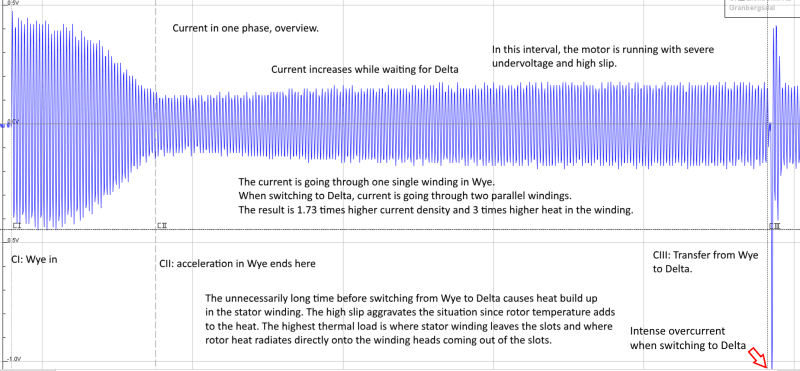Hello Shaaban,
It will be difficult to record something that doesn't seem to happen any more.
What you can do is to arrange a "mouse trap" that trigs on extraordinary high currents. It should also record voltages and speed of the motor. Plus, the trip signal. At least.
With that arrangement, you will have all data and information needed if the trip occurs again.
You probably have all the signals needed, except for the speed signal. A good substitute for a tacho generator is a pulse pick up that senses the key on the motor shaft (if accessible). You can also put a strong neodymium magnet on the shaft and pick up the field with a reed element. For that you need a voltage and a pull-up resistor. That will give you one pulse for each turn and that is suffient if all you want to know is if the motor turns or not. No pulse=stand-still and 25 pulses/second is 1500 RPM etcera.
If there are no CT:s in the system, then you need to use current clamps that can handle the expected current - probably a lot more than rated current's peak value. I use DC clamps for that so one doesn't get fooled by the DC transient at switch-on. That DC transient usually saturates an AC clamp and that is something you should avoid.
What recorder? There are plenty to choose from. Small and fast units like the Pico Scope family has more than adequate BW and many have quite a lot of channels. Like eight. Which seems to suffice in this case. You can use any recorder with BW better than 1 kHz.
Only current in one phase shown.
Gunnar Englund
--------------------------------------
Half full - Half empty? I don't mind. It's what in it that counts.

